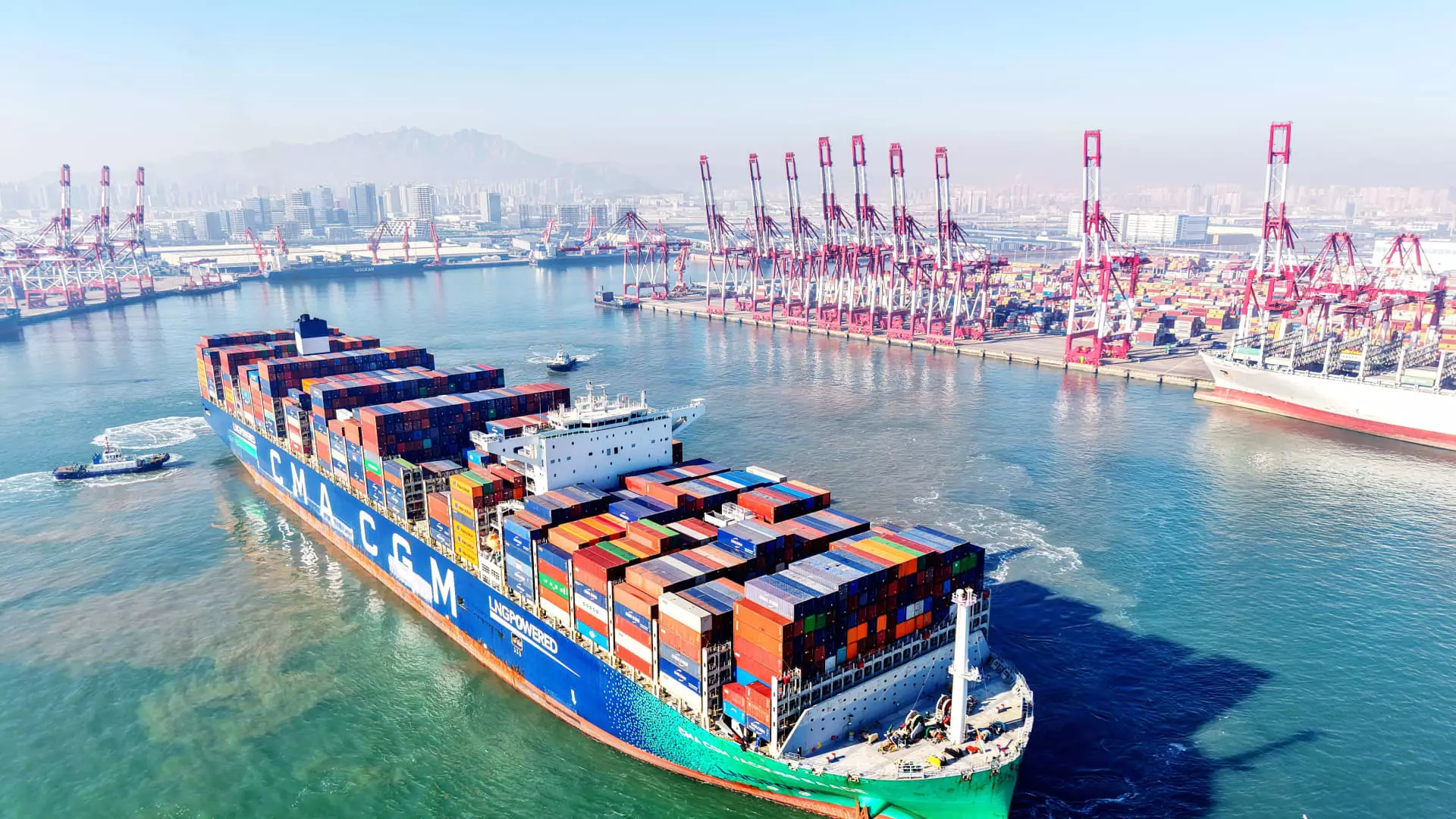As the global financial landscape evolves, China faces new challenges, particularly with the looming threat of increased tariffs from the United States. Following the election of President Donald Trump, a strong commitment to implementing tariffs has sparked uncertainty among investors. The anticipated imposition of an additional 10% tariff on Chinese goods soon after his inauguration signals a shift in trade relations that could have significant repercussions for China’s economy. Analysts at Citigroup anticipate these tariffs may commence as early as the second quarter, potentially culminating in a staggering 15-percentage-point increase. Such tariffs are estimated to impact China’s exports by 6% and could shave off 1% from the nation’s GDP.
The interconnectedness of global economies means that the effects of U.S. tariffs will not be isolated to Chinese shores. The raised expectations for inflation in the U.S. owing to tariffs have already influenced market dynamics, particularly evident in the tumbling Hong Kong Hang Seng Index, which fell by over 8% in a short span. This decline contrasts sharply with the relative resilience of mainland Chinese stocks, which only dropped by 6%. The defensive positioning of Chinese equities is attributed to the central bank’s supportive monetary policies and the continuing decrease in government bond yields. Investors are navigating a landscape fraught with uncertainty, where government intervention could dictate market responses.
In light of the favorable yield compensation from mainland stocks, Citigroup analysts have leaned towards high-yielding investments as attractive propositions. Stocks in the A-share market, particularly those offering dividends in the range of 4% to 6%, have gained traction as safe havens amidst economic unease. Companies like Yutong Bus, Gree Electric Appliances, and Ping An Bank emerge as leading contenders due to their robust yield profiles. Ye Yuhua, an investment manager at Liangdian Private Capital, emphasizes that with slowing economic growth and diminished government bond yields, the case for high-dividend stocks has become more pronounced.
However, potential investors should tread cautiously. The allure of high yields is counterbalanced by the risk posed by stocks sensitive to fluctuating commodity prices. The reality that high dividend yields are not guaranteed introduces an element of risk that cannot be ignored, necessitating a careful assessment of the underlying financial health of the companies in question.
As China strives to maintain stabilization amidst external pressures, the government’s economic policy remains under scrutiny. Analysts at Citigroup glean insights from their discussions with Chinese officials, highlighting a focus on steady economic growth contingent on external tariffs and domestic stimulus measures. The People’s Bank of China (PBOC) stands poised to enact further monetary easing, with projections of interest rate cuts and adjustments to the reserve requirement ratio for banks. Such measures aim to mitigate the effects of external shocks while nurturing ongoing investment in the domestic market.
On a more comprehensive level, the data reveals that China’s GDP for 2024 grew by 5%, fulfilling government targets. However, when stripped of the impact of deflationary pressures and lower pricing, the effective growth rate dwindles to just 4.2%, raising questions about the overall sustainability of this growth trajectory. The effectiveness of fiscal policies, particularly in stimulating the real estate sector, will be crucial to altering the deflationary trend that has plagued the market for nearly two years.
Amidst the complexities of domestic and international pressures, investors must adopt a systematic approach to their strategies. The intertwining of tariffs, interest rates, and government policies necessitates an agile response to rapidly shifting economic indicators. The landscapes of investment are becoming increasingly challenging, yet opportunities remain for those who are willing to evaluate high-yielding stocks carefully. Maintaining an awareness of both macroeconomic trends and individual stock performance will be essential as China navigates the intricate web of domestic growth and international trade dynamics in the months and years to come.

